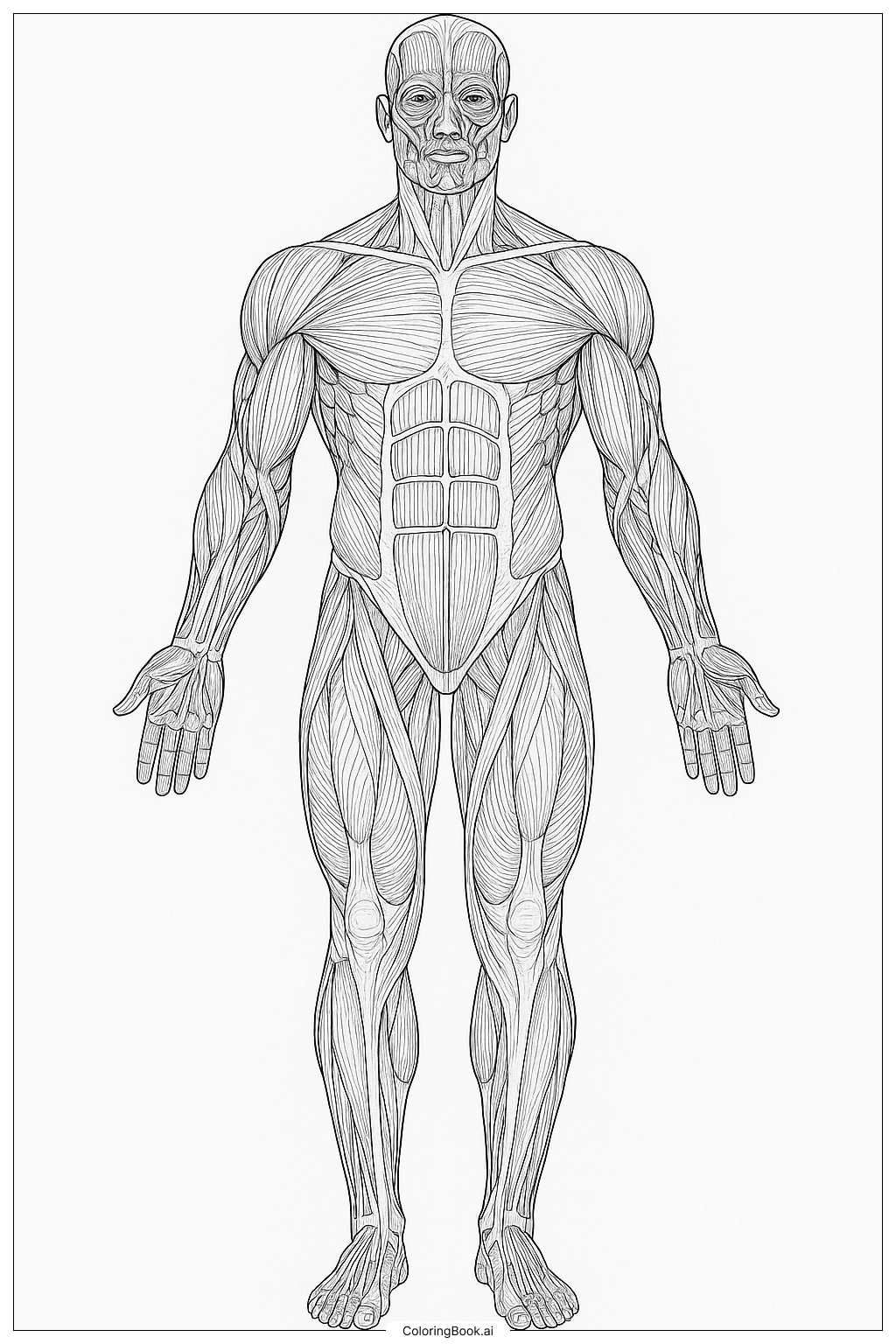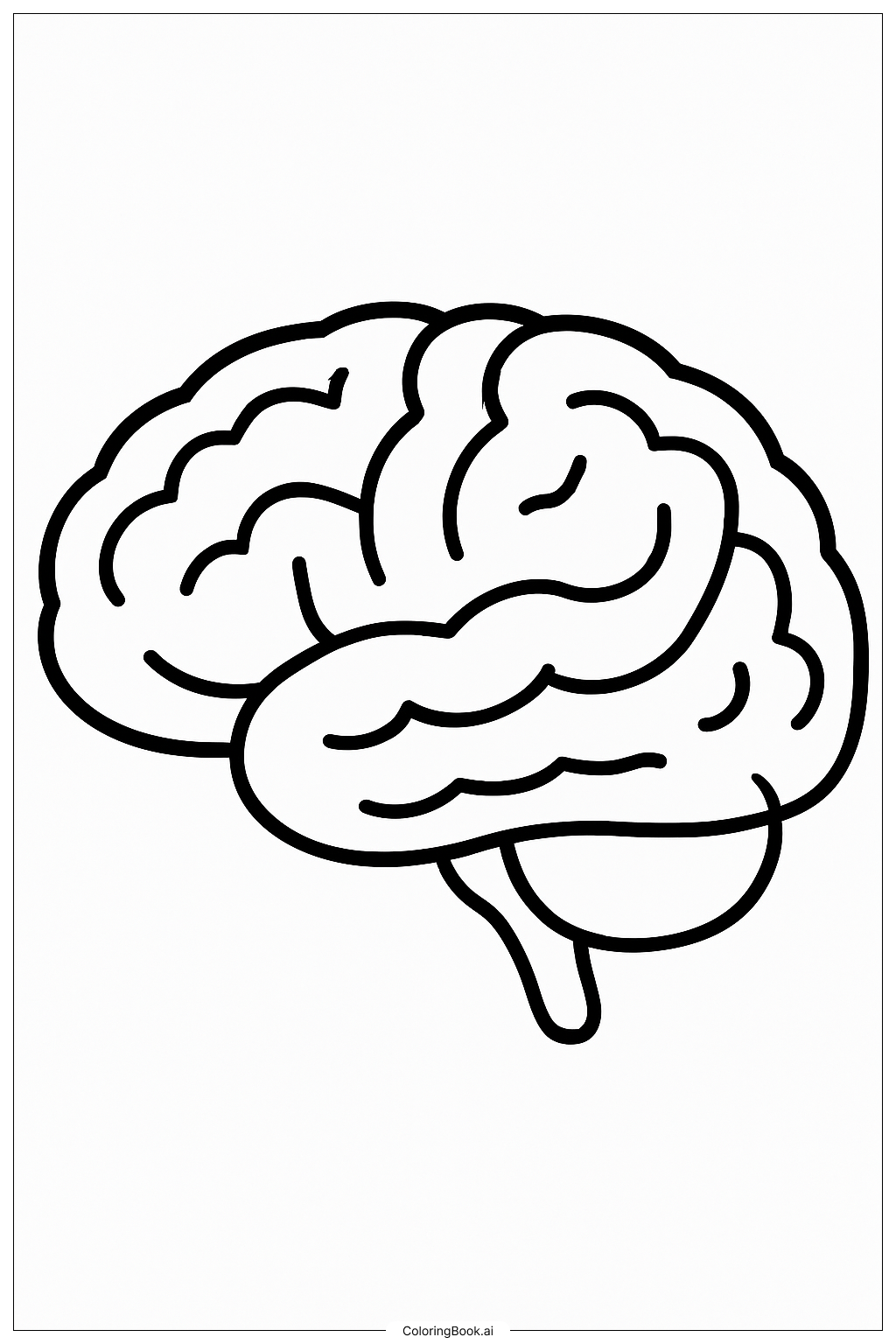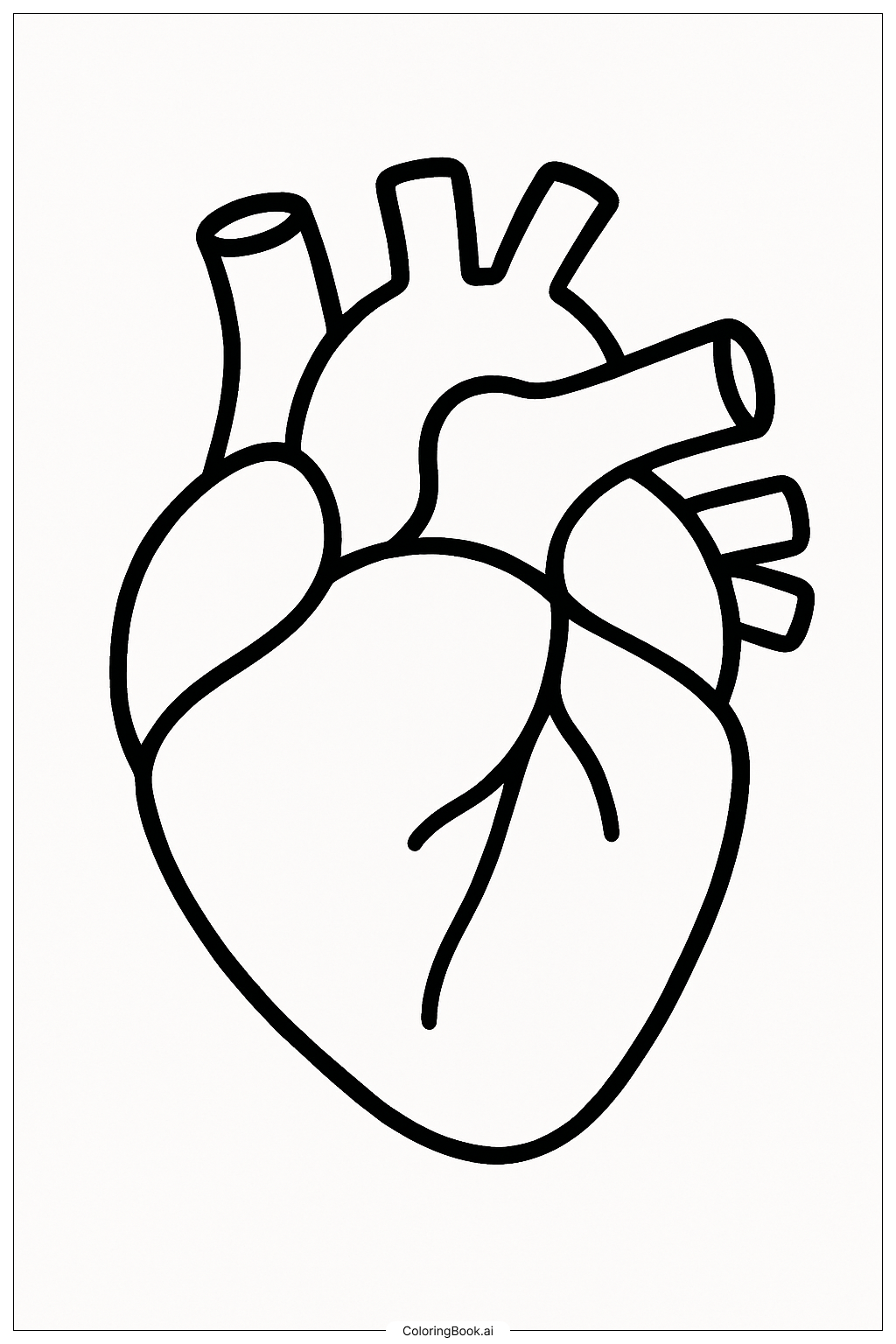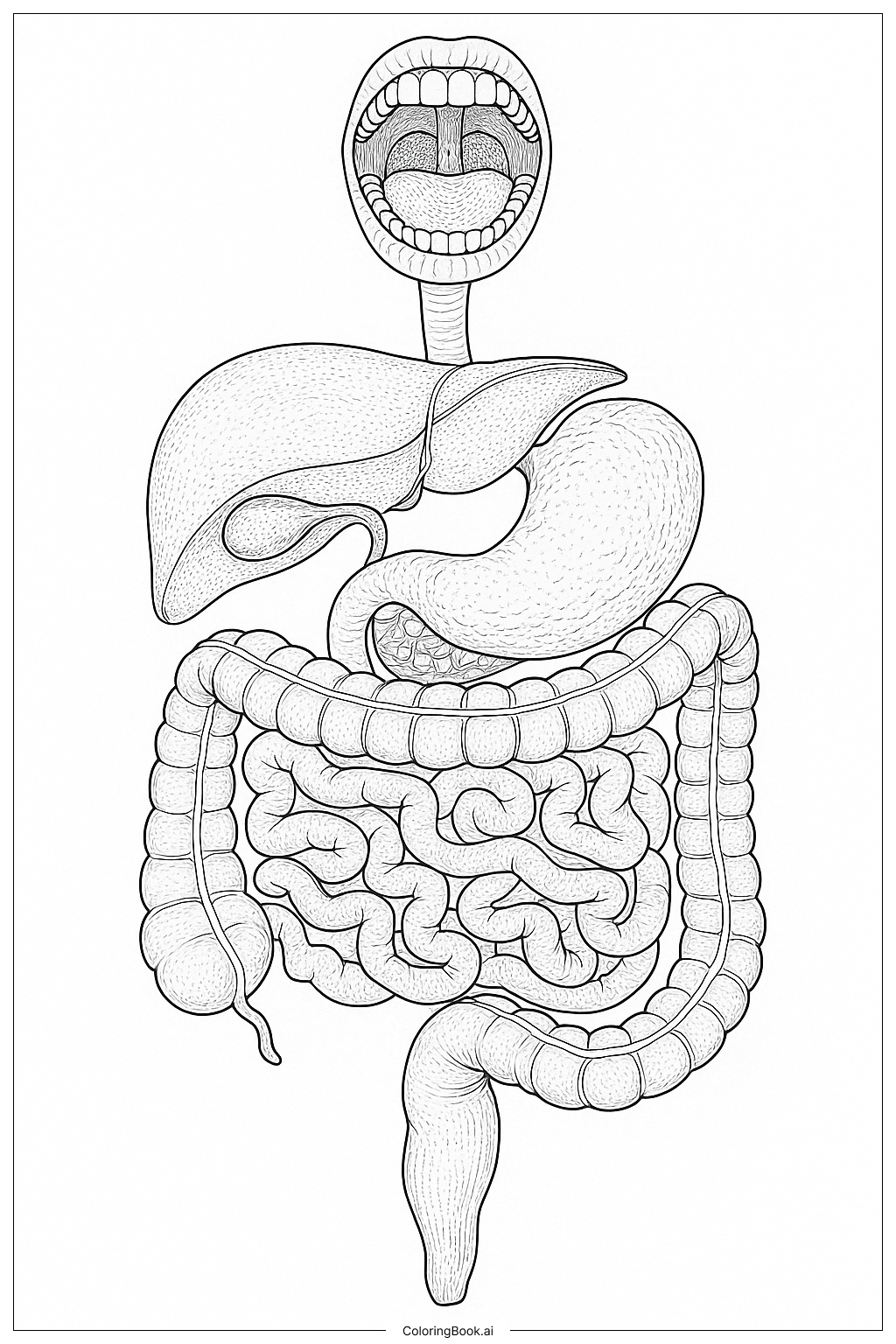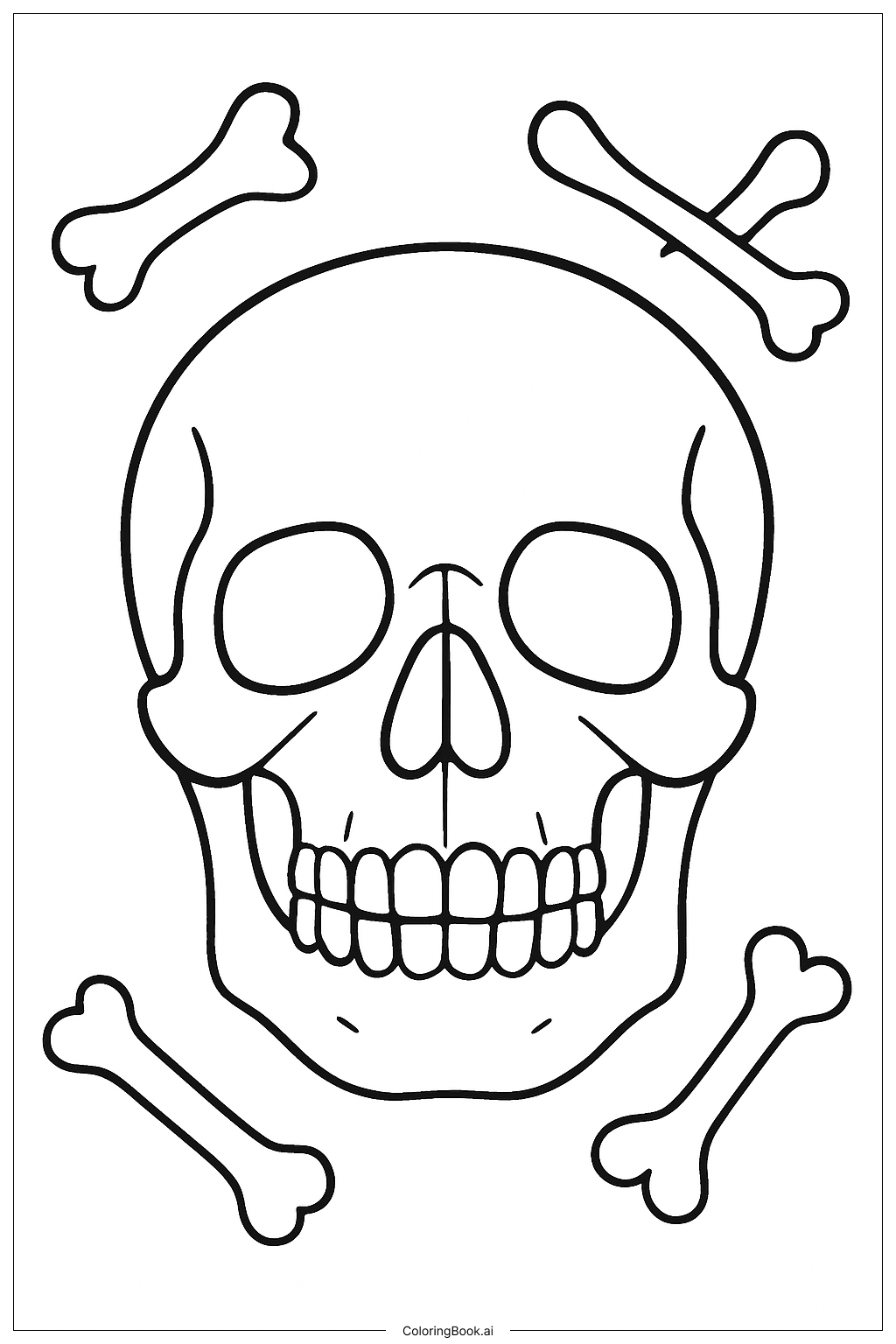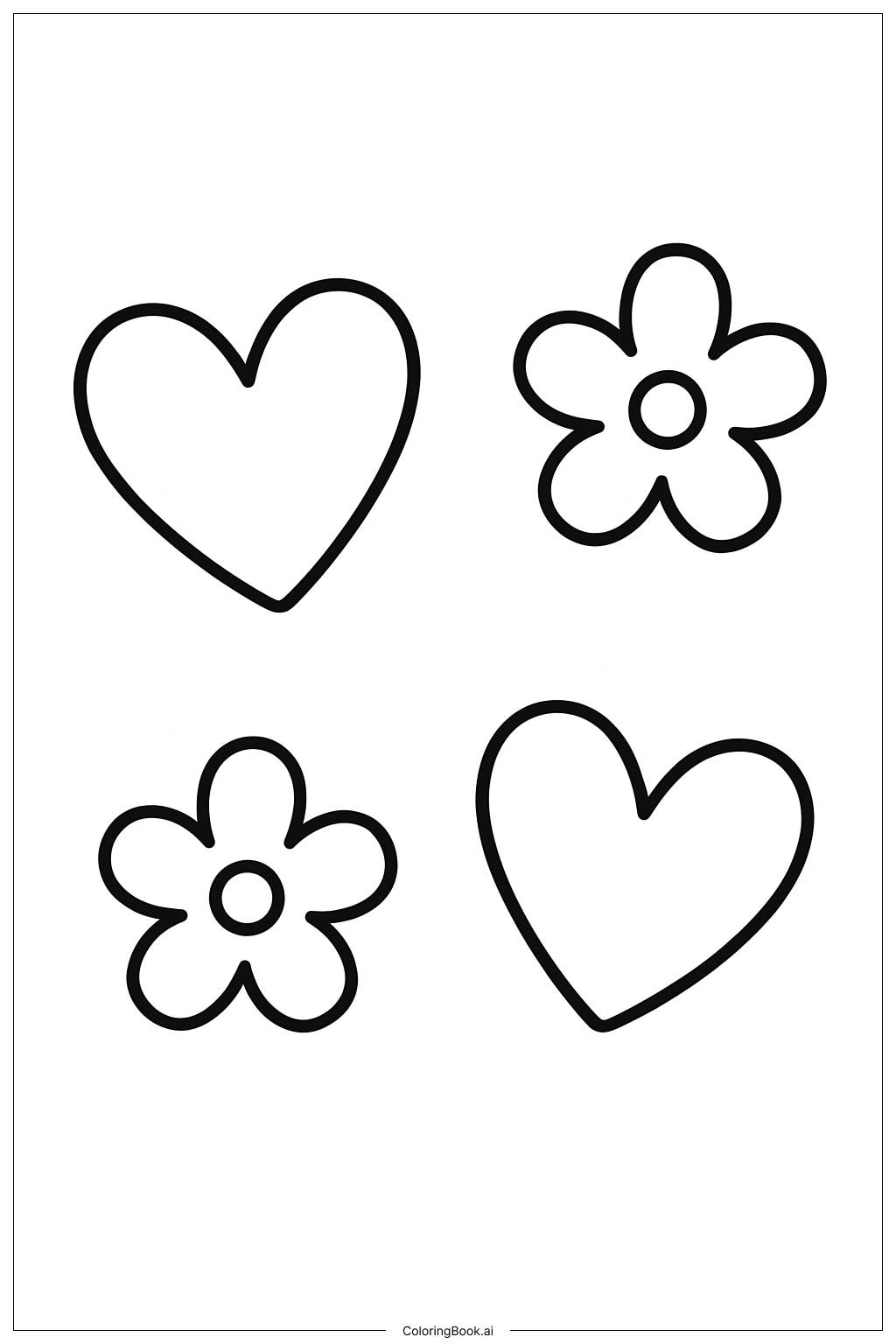Coloring tips: How to color Full Muscular System Anatomy coloring page well?
Try using different shades of red, pink, and brown to color the muscles. Use darker tones for muscles that look deeper or shaded. Lighter colors can show muscles closer to the skin. You can also use colored pencils or markers to carefully color between the lines. Focus on one muscle group at a time, like the arms or legs, to keep your coloring neat. Take your time and enjoy painting each muscle's unique patterns.
Coloring challenges: Which parts are difficult to color and need attention for Full Muscular System Anatomy coloring page?
1. The many thin lines and sections can be hard to color inside without going outside the lines. 2. Some muscle areas are very small and detailed, especially around the hands and face. 3. It might be tricky to choose the right color shades to show depth and muscle layers. 4. Understanding muscle shapes and how they connect can be confusing at first. 5. Keeping the coloring even and smooth on curved muscle surfaces takes some patience and control.
Benefits of coloring books: Advantages of drawing Full Muscular System Anatomy coloring page
Coloring this muscular system picture helps improve focus and fine motor skills. It also teaches about human body parts and how muscles look and work. You learn patience by coloring small detailed sections. This activity encourages creativity while building knowledge of anatomy. It makes science fun and helps remember muscle names and positions better.
